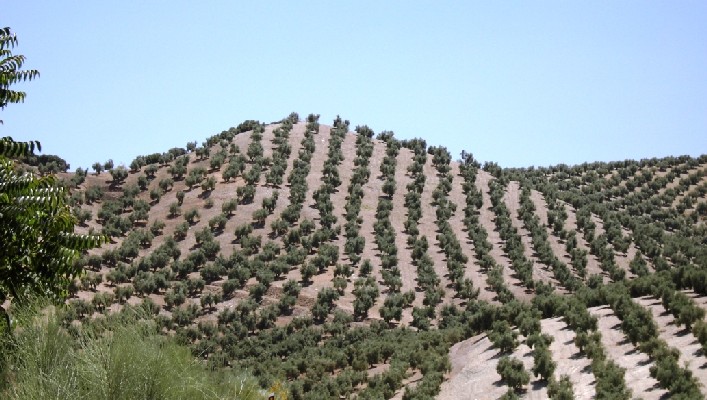The contribution of organic olive
growing, especially on dryland, to non renewable energy saving in Andalusia
is considerable. It is feasible to cut down further on the unnecessary
use of machinery for soil preparation and weed control to improve energetic
efficiency
The current situation of worldwide concern
over the emission of greenhouse gases and its effect on the climate demands
an evaluation, from the perspective of energy efficiency and more specifically
of non-renewable energy sources, of tendencies for change in the management
of agricultural systems which have arisen in recent years. In this context,
Gloria I. Guzmán and Antonio M. Alonso, from the Research and Training
Centre for Organic Farming and Rural Development of Granada (Spain) have
evaluated the contribution of organic olive growing to the increase in
the energy efficiency of Mediterranean agriculture, distinguished according
to type of watering regime and intensiveness of cultivation. The research
work has been supported by the European Commission, the Education and Science
Ministry of Spain and the Innovation, Science and Enterprise Department
of Andalusia Government.
The results show, on one side, the lower energy
efficiency of irrigated land as opposed to dryland (i.e. non-irrigated)
regardless of their style of management and, on the other, the greater
non-renewable energy efficiency of organic olive growing in comparison
with the conventional production. Nevertheless, organic management could
still improve its energy efficiency if it further adjusts and internalizes
the flows of nutrients needed in order to achieve greater sustainability. |

Towards energetic self-sufficiency
Based on the categories analysed here, it
could be concluded that the contribution of organic olive growing, especially
on dryland, to NRE saving in Andalusia is considerable. Of the 42,148 hectares
in existence at the end of 2006, between 60% and 65% are traditional dryland
olive groves on steep Pedroches-style slope and 20% are traditional dryland
olive groves on moderate Sierra Mágina or Granada-style slope. Only
6.4% of organic olive groves in Andalusia are on irrigated land. Those
which remain to make up the 100% fall into other dryland categories which
have not been taken into consideration in this study, as they are not representative
of the overall situation.
Nevertheless, there is room for further improvement
in the sustainability of organic olive growing through greater self sufficiency
within the territory it occupies and, consequently, a lower rate of importation
of energy flows originating from other ecosystems. The use of alperujo
compost and temporary plant covers are strategies which do not involve
extra land usage. This is a highly relevant point, since the need of organic
projects to devote part of their farmland to generating the flows of nutrients
and energy required to effectively reduce imports of organic material from
other agro-ecosystems has on occasions been considered a drawback of organic
production. |